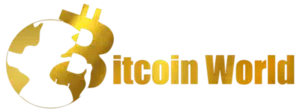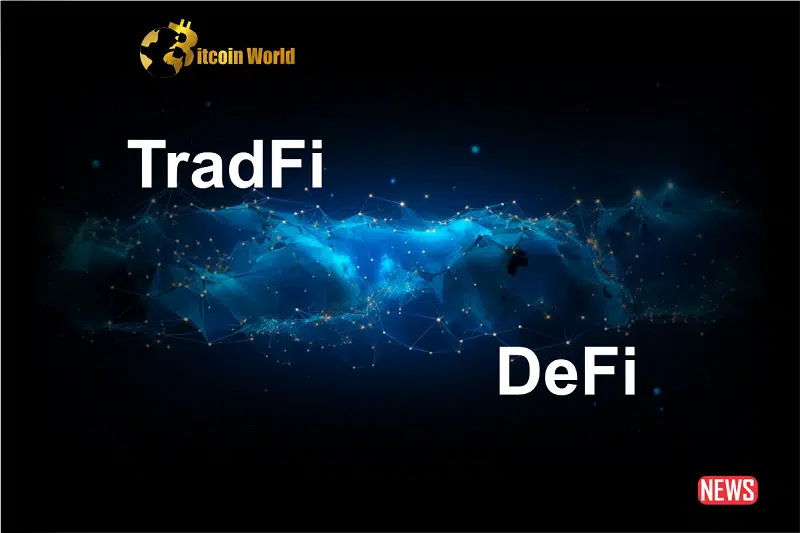The financial world is buzzing about a potential game-changer: the convergence of Traditional Finance (TradFi) and Decentralized Finance (DeFi). For widespread cryptocurrency adoption to truly take off, these two seemingly disparate worlds need to find common ground. It’s a journey, not a sprint, and collaboration is the key. But recently, a major player made a splash that signals real progress.
PayPal’s PYUSD: A Stablecoin Stepping Stone?
Amidst a complex regulatory landscape, particularly in the U.S., a beacon of hope has emerged from an unexpected corner: PayPal. This global payments giant has launched PayPal USD (PYUSD), a stablecoin pegged to the U.S. dollar. Why is this significant? Because it marks the first time a major, mainstream payment processor has ventured into the crypto space with its own stablecoin. This move injects a significant dose of trust and legitimacy into the sometimes-turbulent crypto waters.
Think of it this way: PayPal, a name synonymous with online transactions for millions, is now offering a bridge to crypto. This isn’t just another crypto project; it’s a signal that the financial establishment is starting to take digital assets seriously.

The Road Ahead: Challenges and Opportunities for PYUSD
However, let’s not get ahead of ourselves. While PYUSD is a landmark event, its true impact hinges on several factors aligning. Currently, PYUSD operates within the PayPal walled garden. To truly flourish, it needs to break free and become a versatile stablecoin that seamlessly navigates between Web2 and Web3 environments. Imagine PYUSD moving effortlessly across different blockchains – that’s the level of interoperability needed to unlock its full potential.
Here’s a breakdown of what needs to happen for PYUSD to truly make waves:
- Cross-Chain Functionality: PYUSD needs to operate on multiple blockchains, not just within PayPal’s ecosystem. This will enhance its utility and accessibility.
- Exchange Listings: Listing on both centralized (CEXs) and decentralized exchanges (DEXs) is crucial. This will boost liquidity and allow users to easily trade and utilize PYUSD across various platforms.
- DeFi Integration: PYUSD needs to be integrated into DeFi protocols. Imagine using PYUSD for lending, borrowing, yield farming, and other DeFi activities. This is where the real synergy lies.
PayPal’s entry is a significant step, but it’s just one victory in a larger campaign to legitimize and mainstream cryptocurrency globally. Many more bridges need to be built to achieve true TradFi and DeFi convergence.
Why Convergence Matters: Bridging the Best of Both Worlds
The fusion of TradFi and DeFi isn’t just about hype; it’s about leveraging the strengths of each system. Think of it as a partnership where both sides bring unique assets to the table.
TradFi Strengths:
- Risk Management Expertise: Traditional financial institutions have decades, even centuries, of experience in managing risk. This is crucial in the volatile world of crypto.
- Security and Credibility: TradFi institutions offer a sense of security and credibility that appeals to a more risk-averse audience. This trust is vital for mass adoption.
- Compliance and Regulation: TradFi is well-versed in navigating complex regulatory landscapes, ensuring operations are compliant and above board.
DeFi Strengths:
- Transparency and Openness: DeFi operates on blockchains, offering unparalleled transparency. All transactions are recorded and auditable.
- Autonomy and Decentralization: DeFi empowers users with greater control over their assets and reduces reliance on intermediaries.
- Inclusivity and Accessibility: DeFi has the potential to reach the unbanked and underserved populations, offering financial services to those excluded from traditional systems.
- Innovation and Speed: DeFi is a hotbed of innovation, constantly pushing the boundaries of financial technology with rapid development cycles.
The sweet spot lies in balancing stability, innovation, and autonomy. This is where PayPal’s legacy becomes relevant. PYUSD can act as a secure and familiar on-ramp for individuals new to crypto. PayPal’s reputation for security and compliance can ease the concerns of crypto novices. However, its inherent centralization also presents limitations, particularly in reaching those who are outside the traditional financial system.
Unlocking Synergies: A Symbiotic Future
Imagine a future where PYUSD taps into the decentralized power of DeFi, and DeFi, in turn, benefits from the vast network and user base that PYUSD brings. This symbiotic relationship between Web2 and Web3, TradFi and DeFi, built on credibility, innovation, and accessibility, has the potential to supercharge the global economy and accelerate institutional adoption of digital assets.
However, the transition from Web2 to Web3 is not a simple switch. PayPal’s stablecoin launch is a significant milestone, but it’s still a singular event in a broader landscape where seamless Web2 to Web3 transitions remain challenging.
Collaboration is Key: Breaking Down Silos
To truly achieve convergence, collaboration is paramount. Cryptocurrencies need to shed their technical jargon and become more user-friendly for the average person. Traditional financial institutions and Web2 technologies can play a crucial role in simplifying this transition. Working in isolation, however, poses significant risks and slows down progress.
The beauty of TradFi and DeFi synergy lies in combining transparency and inclusivity with the established security and reach of traditional systems. While achieving full convergence will take time and dedicated effort, it’s undeniably crucial for the widespread adoption of crypto.
Beyond PYUSD: Factors Fueling Crypto Adoption
PYUSD is a piece of the puzzle, but broader trends are also contributing to crypto’s journey toward mass adoption:
- Regulatory Clarity: Forward-thinking regulatory frameworks in regions like Singapore, Hong Kong, and France are creating a more welcoming environment for crypto innovation and growth.
- Central Bank Digital Currencies (CBDCs): The increasing exploration and development of CBDCs by central banks worldwide signal a growing acceptance of digital currencies at the highest levels. CBDCs can streamline trade settlements and modernize financial infrastructure.
- Tokenization of Real-World Assets (RWAs): The tokenization of tangible assets, from real estate to commodities, is unlocking new levels of liquidity and efficiency in markets. Asia, with regions like Thailand, Hong Kong, Singapore, and Japan, is leading the way in fostering regulatory frameworks for tokenization.
However, external economic factors also play a role. Current high-interest rates can deter institutional investment in crypto. As inflation eases and economic conditions stabilize, we can expect to see increased institutional participation in the crypto space.
Finally, overcoming lingering skepticism from mainstream audiences about blockchain technology remains a hurdle. While progress is being made, its impact is still localized and needs to broaden.
A New Chapter in Finance
Despite the challenges, the convergence of DeFi and TradFi, exemplified by initiatives like PayPal’s PYUSD, holds immense promise. By leveraging the unique strengths of both worlds, we are on the cusp of writing a new chapter in the global economy – one that is more inclusive, transparent, and efficient. The journey is ongoing, but the direction is clear: the future of finance is a blended future, where TradFi and DeFi work hand-in-hand to unlock unprecedented possibilities.
Disclaimer: The information provided is not trading advice, Bitcoinworld.co.in holds no liability for any investments made based on the information provided on this page. We strongly recommend independent research and/or consultation with a qualified professional before making any investment decisions.


